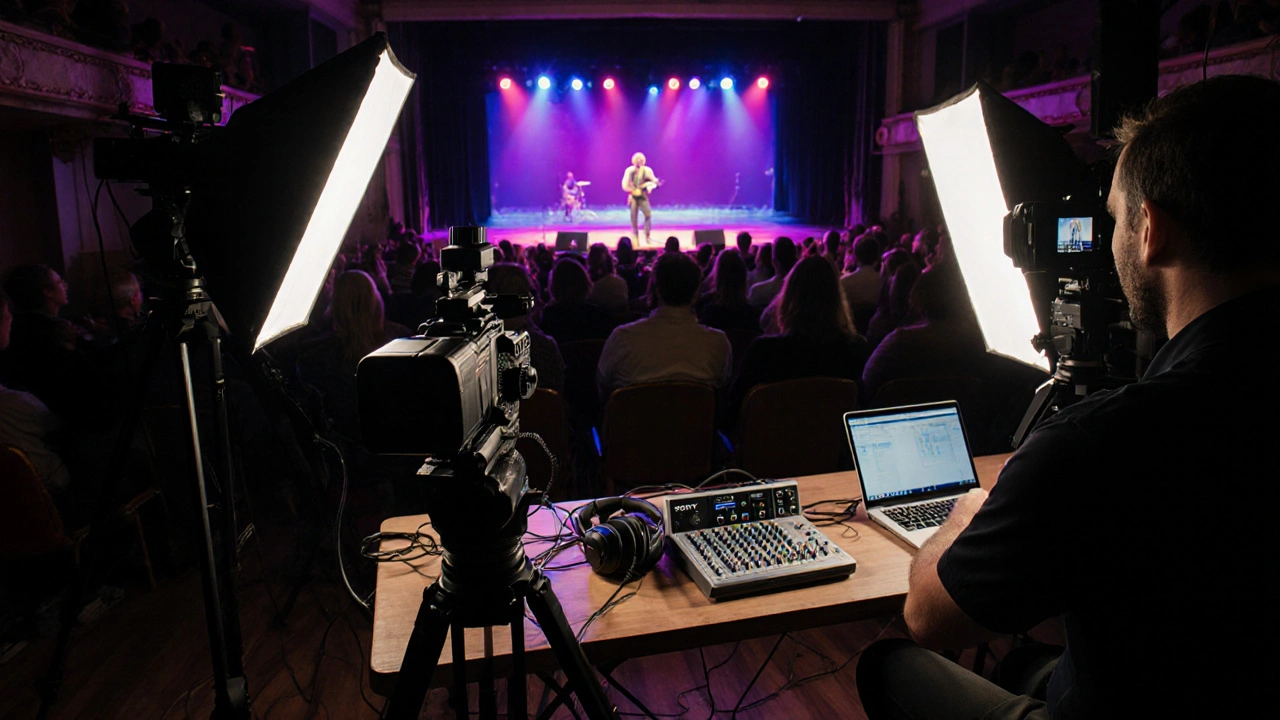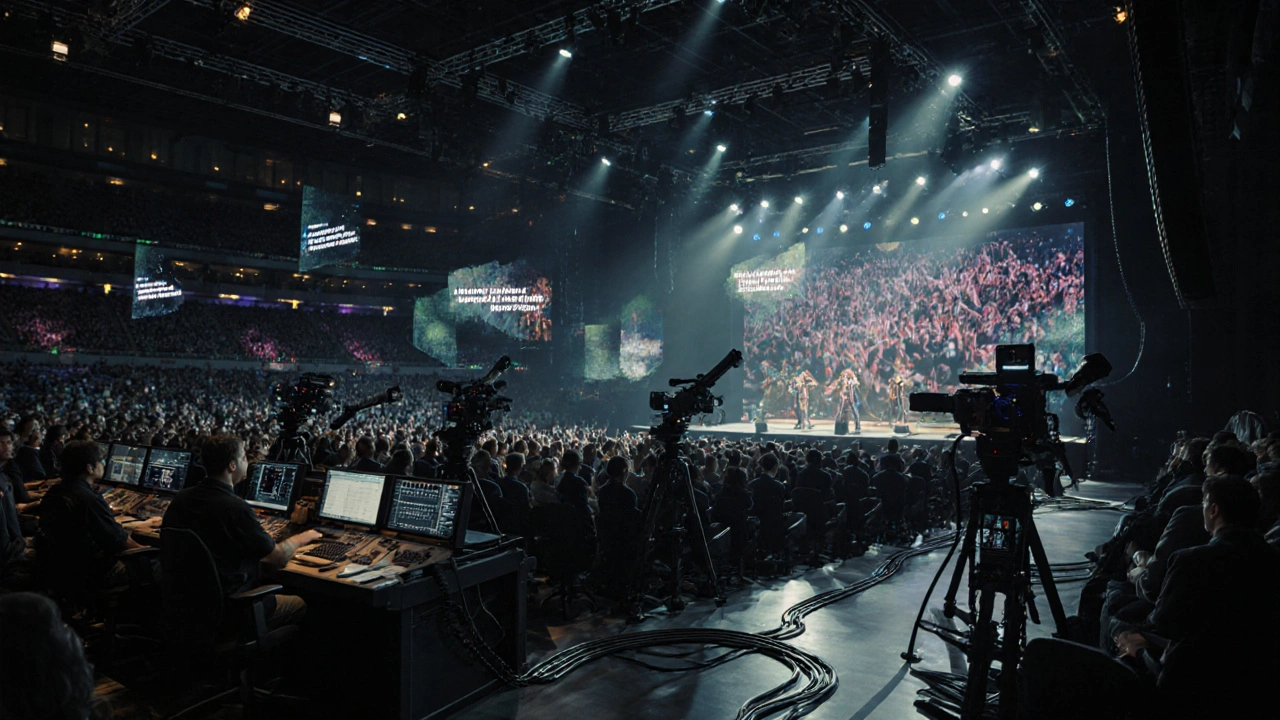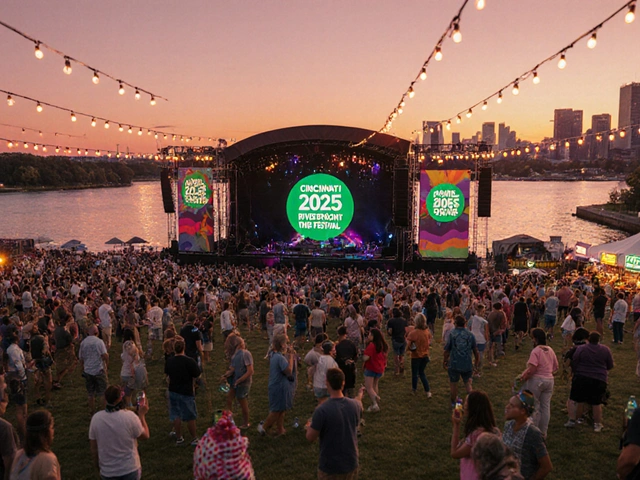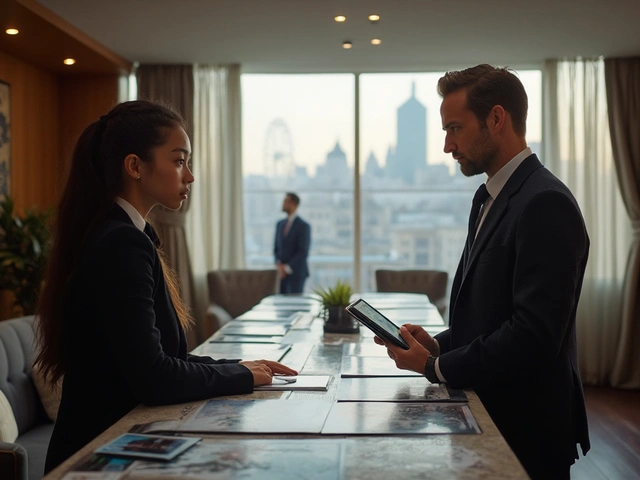How much does it really cost to livestream an event? If you’ve ever planned a live concert, church service, or corporate keynote and wondered why quotes range from $500 to $50,000, you’re not alone. The truth is, there’s no single answer - but there is a clear pattern. What you pay depends on how many people you’re reaching, what kind of quality you need, and whether you’re doing it yourself or hiring pros.
Basic Livestream: Under $1,000
For small venues - a coffee shop gig, a local band’s album release, or a Sunday service with 50 people in the pews - you can stream with gear you already own. A smartphone mounted on a tripod, free apps like YouTube Live or Facebook Live, and a basic external mic (like the Rode VideoMic Go) will get you decent results. Most people in this category spend under $300 total.
You’ll need:
- Smartphone (iPhone 13 or newer, or Android with 4K recording)
- Sturdy tripod ($25)
- External mic ($50-$100)
- Stable Wi-Fi or cellular hotspot (5G recommended)
- Free streaming platform (YouTube, Facebook, Twitch)
This setup works fine for audiences watching on phones. But if you’re streaming to a crowd expecting studio quality - think fans who’ve paid $20 for a digital ticket - this won’t cut it. Audio will echo, lighting will be uneven, and the camera might shake every time someone claps.
Mid-Range Professional Stream: $1,500-$8,000
This is where most indie artists, small theaters, and mid-sized churches go. You’re not just using a phone anymore. You’re using a dedicated camera (like a Sony ZV-E10 or Canon EOS R5), multiple audio inputs, and a live switcher to flip between angles. This setup looks like a real TV broadcast.
Typical gear includes:
- 2-3 cameras (Sony ZV-E10 or Blackmagic Pocket Cinema 6K) - $2,500-$5,000
- Professional audio mixer (Behringer Xenyx QX1202USB) - $150
- 4-6 microphones (lavalier for performers, overhead for crowd) - $600
- Live video switcher (Elgato Stream Deck + OBS or Blackmagic ATEM Mini) - $300-$700
- Lighting kit (LED panels, softboxes) - $400
- Internet upload speed: minimum 20 Mbps, ideally 50 Mbps
If you’re renting this gear for a one-off show, expect to pay $1,500-$3,500. If you’re hiring a local production company to handle everything - camera operators, sound engineers, stream tech - the price jumps to $5,000-$8,000. That’s still a fraction of what a big label spends, but it’s enough to make fans feel like they’re front row.
High-End Broadcast: $10,000-$50,000+
When a major artist like Hozier or a festival like Lollapalooza streams a concert, they’re not just streaming - they’re producing a TV show. This level includes:
- 6-10 professional cameras with robotic arms and teleprompters
- Multi-track audio recording with Dolby Atmos mixing
- Dedicated graphics team for lower thirds, sponsor bugs, and real-time stats
- Redundant internet feeds (fiber + satellite backup)
- On-site engineers, producers, and directors
- Encoding hardware (Teradek, Epiphan) for 4K HDR streaming
- Platform licensing (YouTube Premium, Vevo, or custom player integration)
For a 90-minute concert, you’re looking at $15,000-$30,000 for a top-tier team. Bigger names like Taylor Swift or Beyoncé can spend over $100,000 - not just for the stream, but for the entire behind-the-scenes experience: multi-camera drone shots, augmented reality overlays, interactive fan features, and real-time merch drops.

Hidden Costs You Can’t Ignore
Most people forget the invisible stuff - the stuff that kills a stream even if the video looks perfect.
Bandwidth: Streaming 1080p at 30fps uses 4-6 Mbps. But if you’re streaming from a hotel ballroom with 200 people on Wi-Fi? Good luck. You need a dedicated internet line - and that costs $150-$500 per day to rent.
Platform fees: YouTube and Facebook are free. But if you’re selling tickets through your own site using StreamYard or Vimeo Livestream, you pay 5-15% per ticket. For a $25 ticket, that’s $1.25-$3.75 gone before you even pay the crew.
Post-production: Did you record the whole show? If you want to edit highlights, add captions, or repurpose clips for TikTok and Instagram? That’s another $500-$2,000 for editing, unless you do it yourself.
Legal: Streaming live music means you need public performance licenses. In the U.S., that’s through ASCAP, BMI, or SESAC. A one-time event license for a small venue runs $100-$300. Skip this, and you risk fines or takedowns.
Who Should Do It Themselves? Who Should Hire Pros?
If you’re a solo artist playing a local bar and you’ve got a friend with a camera, DIY makes sense. You’re not losing money - you’re building an audience.
If you’re a nonprofit hosting a fundraiser with 500+ viewers, or a band with a growing fanbase selling $20 digital tickets, hire someone. A bad stream turns fans away. A good one turns one-time viewers into subscribers.
Here’s a quick rule:
- Under 100 viewers? DIY with a phone and mic.
- 100-1,000 viewers? Rent gear or hire a local studio.
- 1,000+ viewers or paid tickets? Hire a professional team.
One band in Nashville did a livestreamed show for $2,200. They sold 400 tickets at $15 each. Net profit after fees? $3,800. That’s not just covering costs - it’s funding their next album.

What’s the Best Value for Most People?
For 90% of small-to-midsize events, the sweet spot is $3,000-$6,000. You get:
- Two professional cameras with steady shots
- Clear, balanced audio without feedback
- Smooth transitions between songs or speakers
- On-screen graphics with event name and artist info
- Reliable internet with backup
- Post-stream editing of highlights
This is what you need to make people say, “I wish I’d been there.” Not, “Why is the audio so quiet?” or “The camera kept cutting to the ceiling.”
What’s Changing in 2025?
AI tools are making livestreaming cheaper and smarter. Tools like Descript and Runway ML can now auto-correct audio levels, remove background noise, and even stabilize shaky footage in real time. Some platforms now offer “auto-produce” modes that switch cameras based on who’s speaking.
Also, more venues are installing permanent streaming rigs - think of them like built-in PA systems. A church or theater that invests $15,000 in a fixed setup can reuse it for every event. That drops the per-event cost to under $500 after the first year.
And don’t forget: streaming isn’t just about today’s show. It’s about building a library. Every stream you record is a potential YouTube video, a TikTok clip, or a future ticket seller. Treat it like marketing - not just tech.
Final Tip: Test Before You Go Live
Never go live on event day without a dry run. Do a 10-minute test stream at least 24 hours before. Check:
- Audio levels on all mics
- Camera framing (no heads cut off)
- Internet upload speed (use Speedtest.net)
- How long it takes to start streaming
- Whether your backup plan works (cellular hotspot, if Wi-Fi fails)
One festival in Austin lost 15 minutes of their headliner’s set because the crew didn’t test the backup encoder. Fans left. The artist never got paid. Don’t let that be you.
Can I livestream a concert for free?
Yes - using a smartphone, free apps like YouTube Live or Facebook Live, and a basic external mic. But free doesn’t mean good. Audio quality, lighting, and stability suffer. If you’re serious about building an audience, invest at least $300-$500 in basic gear. Free streaming works for practice, not professional results.
Do I need a license to stream live music?
Yes. In the U.S., you need a public performance license from ASCAP, BMI, or SESAC to stream copyrighted songs. The cost ranges from $100-$300 for a single event. Without it, your stream can be taken down, and you could face legal action. Even if you’re not charging for tickets, you still need the license.
How much internet speed do I need for a live stream?
For 1080p at 30fps, you need at least 6 Mbps upload speed. For 4K, aim for 20 Mbps. But real-world conditions matter. If you’re streaming from a crowded venue, use a dedicated internet line or a 5G hotspot with a strong signal. Test your upload speed with Speedtest.net before the event. Don’t rely on public Wi-Fi - it’s unreliable and often throttled.
What’s the most common mistake people make when livestreaming?
Skipping the test stream. You’d never do a concert without rehearsing - so why stream without testing? Most failures happen because of poor audio, bad lighting, or internet dropouts. Do a 10-minute test stream 24 hours before the event. Check everything: mics, cameras, internet, backup plan. It takes 30 minutes and saves hours of embarrassment.
Is it better to stream on YouTube or a custom website?
YouTube is easier and reaches more people. But if you’re selling tickets or collecting emails, a custom platform (like Vimeo Livestream or StreamYard) gives you more control. You can brand the page, add merch links, and own your audience data. For most artists, start with YouTube - then move to a custom platform once you have a loyal fanbase.
Can I make money from livestreaming a concert?
Absolutely. Many artists now earn more from digital tickets than physical ones. Charge $10-$25 per viewer, offer VIP packages with backstage Q&As, or sell merch during the stream. One indie band made $12,000 from a $15 digital ticket stream with 800 viewers. After costs, they cleared $7,000 - enough to fund their next tour. Livestreaming isn’t just a backup - it’s a revenue channel.






Mark Brantner
bro i livestreamed my cat knocking over a glass of water and got 12k views so like... who needs gear am i right??
Kate Tran
i tried doing a church stream last year with my phone and a $30 mic... the audio sounded like it was recorded inside a tin can. we lost half the congregation because they kept refreshing the page. never again. got a proper mic this time and it's night and day. also, yes you need that license. i got a letter. it was not fun.
amber hopman
the $3k-$6k sweet spot is dead on. we did a 300-person fundraiser last month with a local production student who rented gear and ran OBS. we made $8k in tickets, spent $4.2k, and still had enough left over to pay the band and buy new mics. the real win? we got 300 new email subscribers. streaming isn't tech-it's marketing. also, test your backup hotspot. i've seen too many streams die because someone thought '5g means magic'.
Jim Sonntag
ai auto-producing streams now? cool. next they'll replace the sound engineer with a chatbot that says 'you sound great' when the mic is muted. i miss when live meant live. not a polished ai-generated ghost of a performance. also, why are we still pretending youtube is free? their algorithm owns your audience now. you're just renting eyeballs.
Deepak Sungra
you people are overthinking this. i did a 500 person stream for $1200 using my laptop and a $40 usb mic. the audio was fine. the camera was shaky but who cares? people just wanna see the band. no one is watching for 4k HDR. also i got fined $800 for not having a license. so yeah. maybe don't be a dumbass like me.
Samar Omar
the notion that a smartphone stream is 'acceptable' for anything beyond a backyard barbecue is frankly embarrassing. the tonal imbalance, the lack of dynamic range, the visual compression artifacts-it’s not merely inadequate, it’s an affront to the artistry of live performance. I watched a performance last week streamed on a Pixel 7 that made the violin sound like it was being played through a kazoo in a wind tunnel. The audience didn’t just miss the experience-they were actively harmed by it. True art deserves fidelity. If you’re not investing in professional-grade audio capture and spatial lighting, you’re not streaming-you’re broadcasting mediocrity.
chioma okwara
you said '5g recommended' but 5g is a cellular network not an internet speed. its 5g not 5gbps. also you wrote 'you'll need' then listed items but didnt capitalize them. and you said 'dont rely on public wifi' but then said 'use a 5g hotspot' which is still public wifi. fix your grammar. also you missed that you need a static ip for professional streaming. this whole thing is full of errors.
John Fox
test your stream. i did. forgot to check the backup. stream died. crowd left. artist cried. i still feel bad. next time im bringing two hotspots and a satellite phone just in case